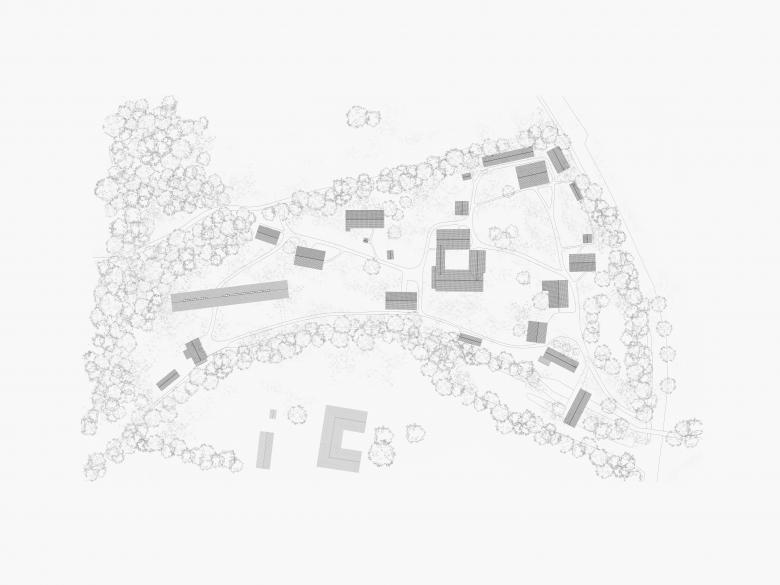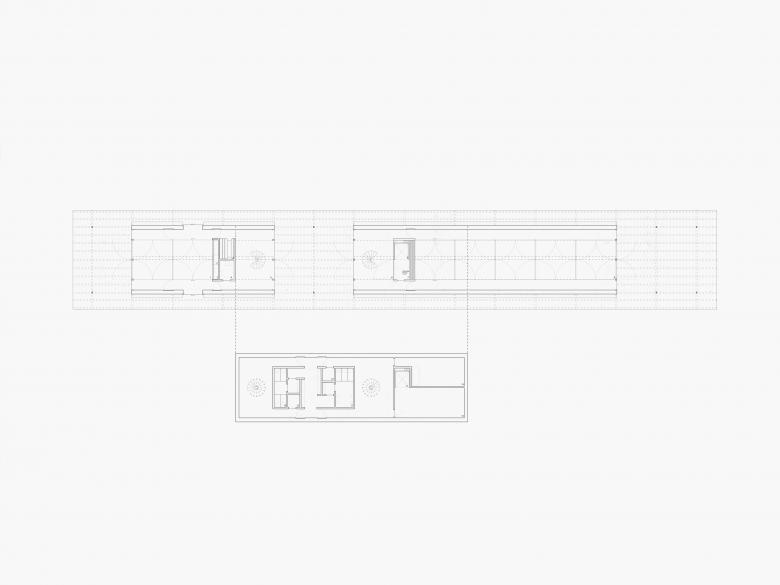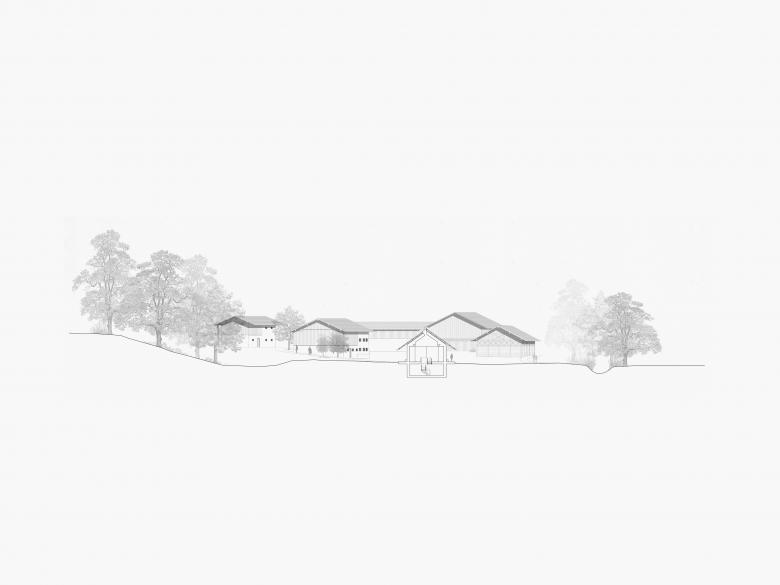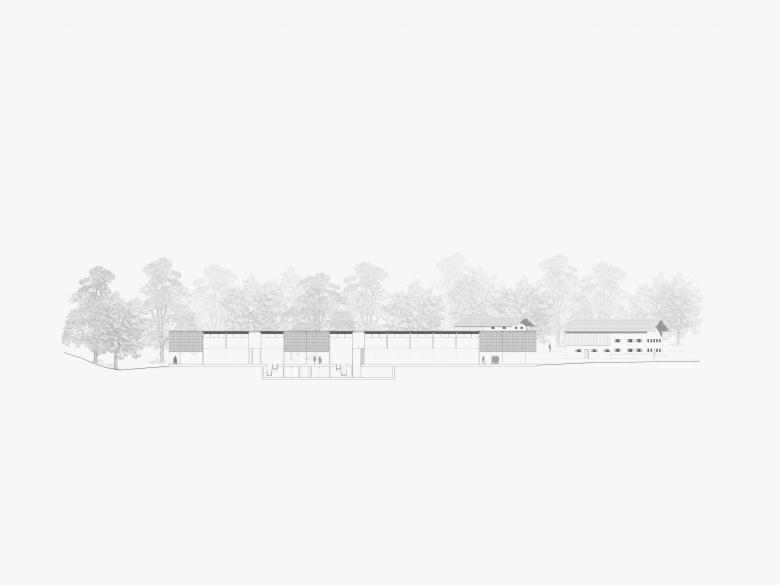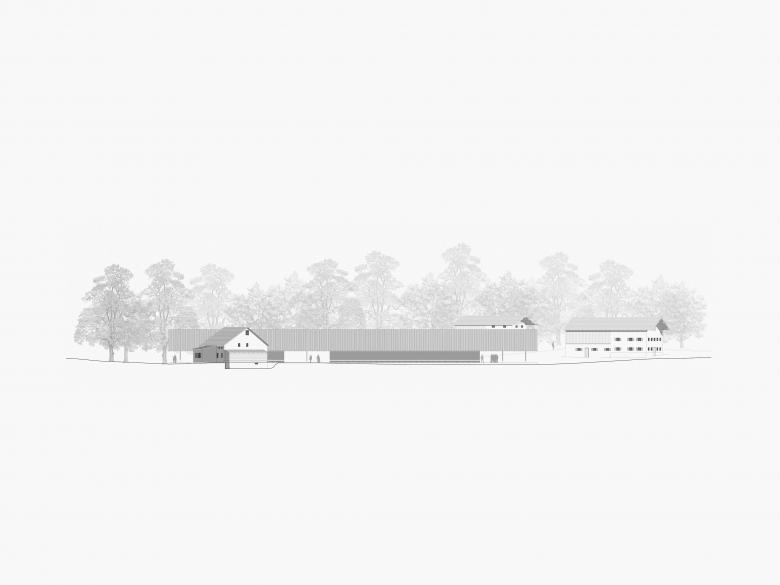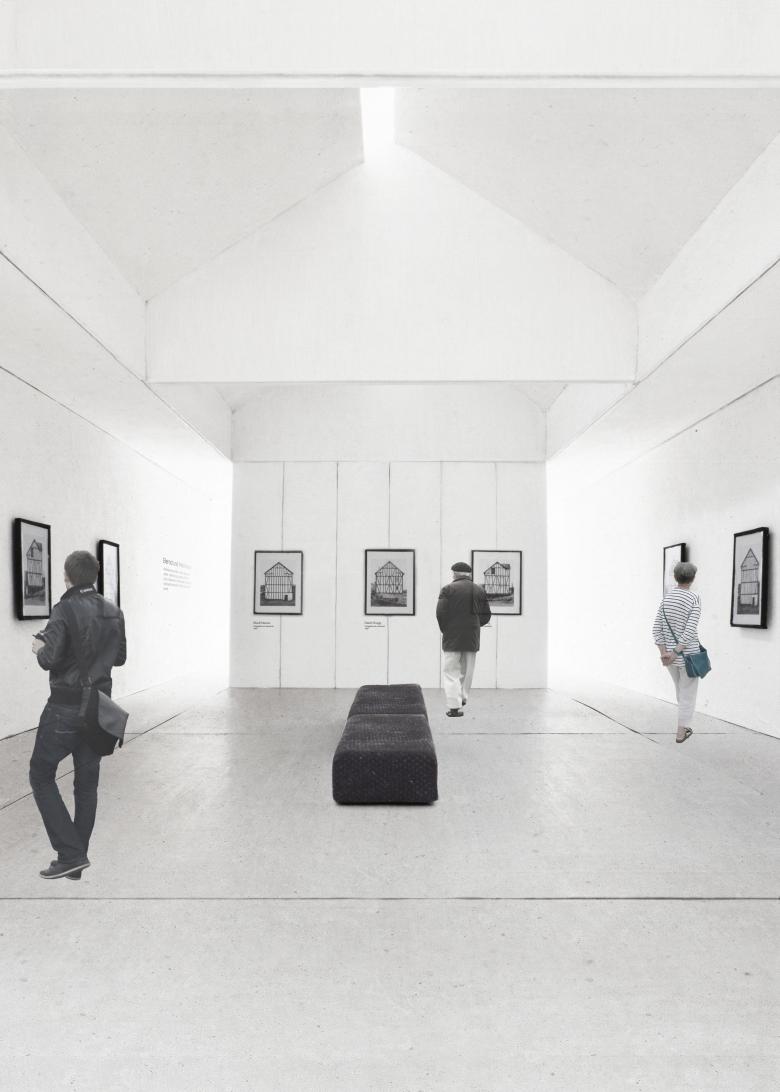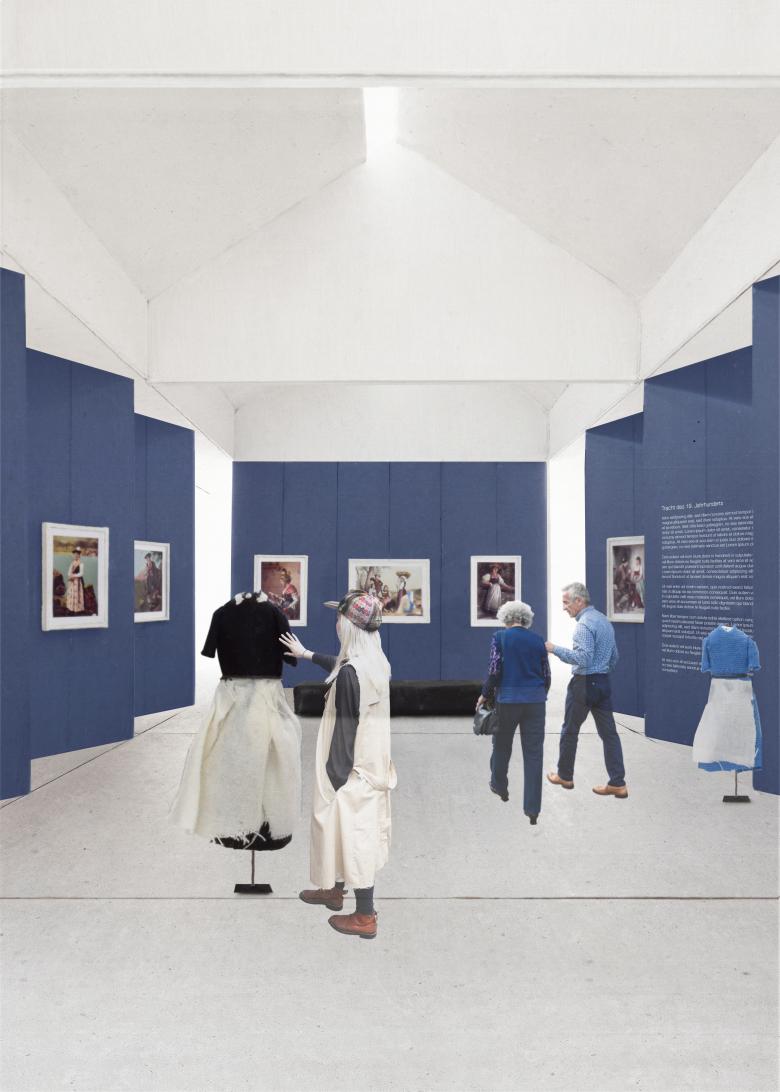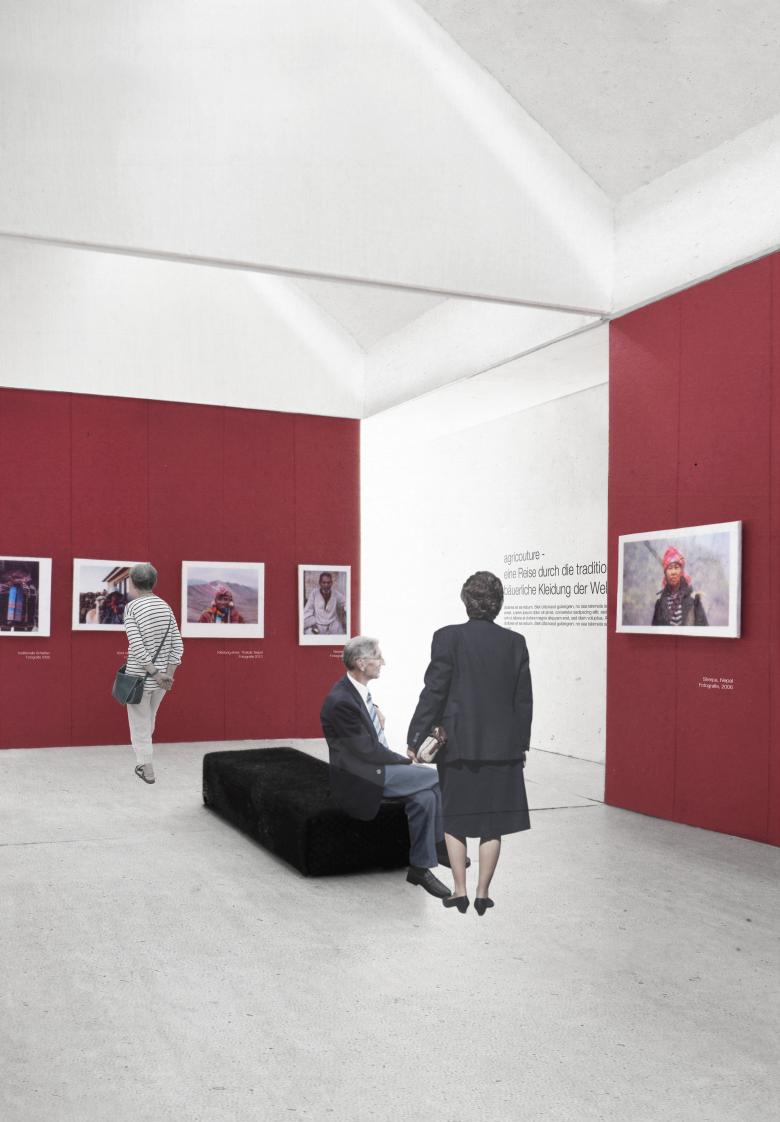Farmhouse Museum Ammerang
Ammerang, Germany
- Architects
- Becker Architects Planners BDA
- Location
- Ammerang, Germany
- Year
- 2021
- Client
- Bezirk Oberbayern
- Team
- Michael Becker, Roland Schafroth
- Structural engineering
- Merz, Kley, Partner GmbH
- Building physics
- Müller BBM GmbH
- GFA
- 1.298 m2
- GA
- 7.194 m3
- Competition
- Special price
The Ammerang Farmhouse Museum is being expanded to include an exhibition building and an education building. This will significantly strengthen the educational work in the museum. In addition to the large collection of exhibit buildings, lectures, activity programs and high-quality special exhibitions will in the future sensitize visitors to history and tradition, while at the same time addressing contemporary issues. Similar to the entrance building, the new rooms have a special position in the area. They are not part of the urban set exhibits, but extend them as a "serving spatial structure".
Respecting the exhibits | Based on this view, a separation of the spatial volumes is dispensed with. Rather, the exhibition and mediation areas are concentrated under a common roof, moved away from the actual exhibit buildings and their free space is deliberately maintained. The existing visual and spatial relationships between the exhibits are thus preserved. The extension of the Bartlhof is, contrary to the invitation to tender, waived for the aforementioned reasons. As a consequence, special exhibitions, which are to interpret the thematic context in a consciously contemporary way, are not located in the exhibit itself. The new building is located in the western part of the site, where a significantly reduced density of exhibits can be found. Coming from the eastern museum area, the spatial area with the highest density of exhibits, the exhibition building presents itself gabled and subordinates itself in its scale to the exhibit buildings. With the passage through the urban bottleneck between Wagnerhäusl and Häuslmannhof and thus "entry" into the western area, the perception of the exhibition building changes in a dramatic increase from gable to eaves, accompanied by a deliberate leap in scale. Henceforth, the building is perceivable as a long structure floating in the willow, and thus the legibility of its function as an exhibition building and its special role is clearly given.
The didactic path | The location at the "end" of the area results in a clearly articulated turning point of the path through the area. As a bridge over the path, analogous to the bridge of the entrance building over the brook, a precisely formulated overall logic (starting point - entrance building; turning point - exhibition and mediation building; end point - entrance building) of the special structures that lead through the area results. A didactic circuit (experience, learn, reflect, verify) is created, where at the beginning the exhibit buildings and their aura can be experienced on the object itself. In the exhibition building, the view is broadened through the mediation of the special exhibitions. Subsequently, the visitor gets a targeted retrospective view of the exhibit buildings via the covered outdoor area of the exhibition building and can perceive thematic analogies or contrasts, before he is then offered the opportunity to verify what he has learned, thoughts or impressions on the "way back".
The "simple" building | Following the self-conception of a "serving" building, the structure articulates itself as a "simple" building, whose appearance is explained by the functional as well as spatial-climatic requirements in addition to the urban planning component. The design attitude thus refers to traditional rural buildings, whose aesthetics, in addition to representative aspects, were often fed by functional considerations. Large canopies and covered areas are characteristic and serve to shade the exterior walls as well as openings. The room bodies located under the large roof are made of a combination of insulating concrete for the walls and roof as well as storage-capable concrete for the floor and ceilings in order to be able to guarantee the greatest possible storage mass and thus, in interaction with the canopies, a stable room climate in summer. A long, narrow basic form leads, due to the recurring, identical construction elements and smaller spans, to an increased constructive efficiency and thus economic efficiency. The result is a reduced, functional appearance that purposefully contrasts the exhibit buildings, thus in turn underscoring the special role of the building and at the same time in turn purposefully seeking echoes of the material ductus of agricultural construction in the 21st century.
Maximum variability | In terms of interior space, the building is designed as a spatial system with two large rooms, which are set in relation to each other by the covered vestibule that spans the circular path. The large rooms can be optimally adapted to the utilization and exhibition concepts by means of sliding "room panels" that divide, subdivide and specifically control the quality of the space. In addition to their space-creating function, these room panels also serve as large-area acoustic elements and as supports for the exhibits. The interplay between the concentration of uses on the one hand and the identical basic principle of the rooms on the other results in maximum flexibility of use. Thus, an exchange, combination or substitution of the uses is possible without any problems. For example, the education area can be temporarily added to the exhibition area if an additional room is needed for the opening of an exhibition and for lectures in the supporting program. During the winter months, a distinction can also be made between the processing of the exhibits and the preparation of the exhibition, or the exhibition room can be used during non-exhibition periods for educational purposes or workshops with a large number of visitors. The serving rooms are, as far as reasonable, bundled and offered in the basement, which also results in further infrastructural synergy effects. At the same time, the basement serves as a thermally protected transition, but can also be assigned to the individual parts of the building if necessary.
Related Projects
Magazine
-
Winners of the 5th Simon Architecture Prize
4 days ago
-
2024, The Year in …
5 days ago
-
Raising the (White) Bar
6 days ago
-
Architects Building Laws
1 week ago
